A patent is an exclusive right granted for an invention. In other words, a patent is an exclusive right to a product or a process that generally provides a new way of doing something or offers a new technical solution to a problem. To get a patent, technical information about the invention must be disclosed to the public in a patent application.
The patent owner may give permission to, or license, other parties to use the invention on mutually agreed terms. The owner may also sell the right to the invention to someone else, who will then become the new owner of the patent. Once a patent expires, the protection ends, and the invention enters the public domain; that is, anyone can commercially exploit the invention without infringing the patent.
A patent owner has the right to decide who may – or may not – use the patented invention for the period in which the invention is protected. In other words, patent protection means that the invention cannot be commercially made, used, distributed, imported, or sold by others without the patent owner's consent.
Patents may be granted for inventions in any field of technology, from an everyday kitchen utensil to a nanotechnology chip. An invention can be a product – such as a chemical compound – or a process, for example, a method for producing a specific chemical compound. Many products contain a number of inventions; for example, a laptop computer can involve hundreds of inventions working together.
Patent protection is granted for a limited period, generally 20 years from the filing date of the application.
Patents are territorial rights. In general, the exclusive rights are only applicable in the country or region in which a patent has been filed and granted, in accordance with the law of that country or region.
Patent rights are usually enforced in a court on the initiative of the right owner. In most systems, a court of law has the authority to stop patent infringement. However, the main responsibility for monitoring, identifying, and taking action against infringers of a patent lies with the patent owner.
Licensing a patent simply means that the patent owner grants permission to another individual/organization to make, use, sell, etc., his/her patented invention. This takes place according to agreed terms and conditions (e.g., defining the amount and type of payment to be made by the licensee to the licensor), for a defined purpose, in a defined territory, and for an agreed period of time.
A patent owner may grant a license to a third party for many reasons. The patent owner may not have the necessary manufacturing facilities, for example, and therefore opts to allow others to make and sell the patented invention in return for royalty payments. Alternatively, the owner may have manufacturing facilities, but they may not be large enough to cover market demand. In this case, they may license the patent to another manufacturer in order to benefit from another income stream. Another scenario is when the patent owner wishes to concentrate on one geographic market and chooses to grant a license to another party in different regions.
Entering into a licensing agreement can help build a mutually beneficial business relationship. Unlike selling or transferring a patent, the licensor continues to have property rights over the patented invention.
Patented inventions have pervaded every aspect of human life—from electric lighting (Edison and Swan) and plastic (Baekeland), to ballpoint pens (Biro) and microprocessors (Intel).
Patents provide incentives and protection for individuals by offering recognition for their creativity and the possibility of material rewards for their inventions. The obligatory publication of patents and applications facilitates knowledge sharing, avoiding the need to reinvent the wheel and accelerating innovation.
Without protection, technical knowledge could be freely used without credit or compensation, discouraging inventors. The patent system corrects this by offering limited exclusive rights to innovators, encouraging them to bring new ideas to market.
Additionally, public disclosure of patent knowledge spurs further innovation by encouraging competitors to develop alternative solutions, enhancing the quality of life and societal progress.
Patents are granted by national or regional patent offices. Regional offices include:
African Intellectual Property Organization (OAPI)
African Regional Intellectual Property Organization (ARIPO)
Eurasian Patent Organization (EAPO)
European Patent Office (EPO)
Patent Office of the Cooperation Council for the Arab States of the Gulf (GCC Patent Office)
These regional offices accept applications that are valid in multiple member states. There is no universal international patent.
While applicants can file on their own, due to the complexity of patent law and drafting, it is highly recommended to seek assistance from a qualified patent attorney or agent.
Additionally, many countries require applicants without residence or business presence in that country to be represented by a local attorney or agent.
While requirements vary by country, key conditions generally include:
Novelty: The invention must have a new characteristic not known in the existing body of knowledge (prior art).
Inventive Step (Non-obviousness): The invention must not be obvious to someone skilled in the relevant field.
Industrial Applicability: The invention must be usable in some industry, beyond theoretical value.
Patentable Subject Matter: Some things (e.g., theories, aesthetic works, methods for medical treatment) may not be patentable in many jurisdictions.
Disclosure: The application must clearly and completely describe the invention so others skilled in the field can replicate it.
There is no universal or international patent. Patents are territorial and must be filed, granted, and enforced in each country of interest.
However, the Patent Cooperation Treaty (PCT) offers a mechanism to file one international application that has effect in multiple contracting states. This simplifies the process for those seeking patent protection in several countries.
No. Patent systems require public disclosure in exchange for protection. In some countries, disclosure occurs only after the patent is granted; in others, applications are published 18 months after filing or from the priority date.
Many small enterprises and inventors can benefit from patents, not just large corporations. Most patents are for incremental improvements, not groundbreaking discoveries.
Some countries offer protection for incremental innovations via utility models, which are easier to obtain and shorter in duration.
Exclusive Rights: Prevent others from commercially exploiting your invention for 20 years.
Return on Investment: Secure market leadership and higher returns.
Licensing or Sale Opportunities: Monetize your invention through licensing or sales, even if you do not commercialize it yourself.

WhatsApp us